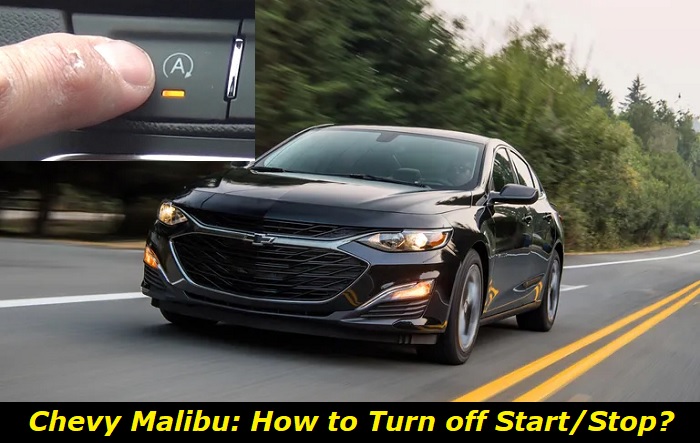The automatic stop-start system was invented back in the 1970s by none other than Toyota. Throughout the years, automotive manufacturers have been constantly trying to come up with different ways to increase mileage, and fuel economy and at the same time decrease the wear of the vehicles.
Car software settings problems highlights
- Howcommon:very common
- Main reasons:hard-to-operate software, glitch, hardware issues
- DIY diagnosis:possible
- DIYrepair:possible
- Solutions:resetting, learning how to set, asking for professional help
- Can you drive?yes
- Price in dealership:$150 - $250

What is Auto Stop?
If your vehicle has an automatic stop/start system built into it, you either love it or hate it! The automatic start/stop technology that has recently been swarming the markets does exactly what its name suggests - it turns your engine on or off, automatically, depending on the particular circumstance.
Why would anyone want this you might ask yourself? Well, the general idea was that it would help reduce fuel consumption when the engine was turned off, and consequently, it would improve fuel efficiency.
Also, while at the same time-saving money and being more efficient the vehicles that were equipped with this function would also be more eco-friendly.
Why use the Auto Stop function?
The automatic stop/start has a simple task - turn off the engine when the vehicle comes to a full stop. Instead of idling your engine at a stop, the Auto stop/start function will shut it off completely and then swiftly turn it back on when you are ready to go.
For example, you might have a red light coming up in front of you. Instead of wasting fuel and emissions, the automatic start/stop will turn off your engine when you come to a complete stop, and spark it back up as soon as you release the brake pedal.
If you live in a congested area where there are a lot of participants in traffic, or you find yourself in constant stop-and-go situations the automatic start/stop can save you up to 5% of gas.
How does Auto Stop work?
The innovation behind the automatic start/stop technology is not that hard to wrap your head around. Mainly, it all comes down to the computer checking the engine RPM at all times.
If the RPMs start falling and the vehicle begins coming to a full stop, the automatic start/stop will activate and it will turn off your engine as well as disengage the transmission.
After you've decided to continue driving from a full stop, as we've mentioned above, the only thing you need to do is to let your foot off the brake pedal and automatic start/stop will do everything else. No pressure on the brakes signalizes that the car engine should be restarted.
How to turn Auto Stop Off
The automatic stop/start function does not need to be enabled because if your vehicle came with it is already activated. Many people don't like car automatization to this extent and if you are one of them you will appreciate some information on how you can switch it off!
Different vehicles have different ways of adjusting and switching things on and off. In this article, we'll review how you can turn off automatic stop/start on a new Chevy Malibu.
Sit back behind your wheel in your new Chevy Malibu and follow these simple instructions if you wish to deactivate the automatic start/stop function.
Let's use a Chevy Malibu 2016 as an example as it also has an automatic start/stop function but it's not as easy to turn off as in newer models. In this particular car, the first step would be to get in your car and start it like you normally would. Secondly, move your gear selector into the position marked as "L". After doing that press the "+" button placed on the shifter six times. That's it! You've deactivated the automatic stop/start function in your Chevy Malibu 2016.
If you don't feel like going through this hassle every time you wish to set the automatic start/stop feature off you should follow these next steps. Before going further, this option is not advisable as your vehicle will constantly show an error in its system and will most likely fail inspection.
But for the sake of information here is a simple guideline:
The first step would be to pop open the hood and find a connector that functions as a switch for hood-open.
If you disconnect that connector it will show the system that the hood is open even if it's actually closed, and the computer won't allow the automatic stop/start function to trigger. Although it should not hurt the engine in any way, this method is not advisable.
Another example we could use is the newer model Chevy Malibu 2020. On this car model, you have the automatic start/stop button assigned to the middle of your dashboard. You can press the button to activate or deactivate the automatic start/stop function.
The button looks like an "A" letter surrounded by a curved line. After pressing that button, a message should appear on your screen informing you that you have successfully deactivated the automatic stop/start feature.
Does Auto Stop affect starter components?
Surely, you've wondered if the constant restarting of the engine will introduce some damage to your starters, and you're not the only one! You see, every vehicle has a certain amount of start cycles that the manufacturer has predesigned for that vehicle - that usually being around 100,000 cycles.
However, more recently, due to there being a lot more automatic start/stop technology in cars than before, the suppliers have started to produce engine bearings that are able to hold up to 300,000 to 500,000 start cycles.
Moreover, the engines nowadays are built to withstand much harsher conditions than the engines a few decades ago which makes the auto stop/start function not wear them as much.
To some people, the wear that the automatic start/stop function leaves on the engine and the starters is "a bit less than a cold start".
Does Auto Stop damage the engine?
We all know that the most wear and tear occur in the engine when the friction is high. That can happen when you leave your engine for a long period of time and the temperature gage drops all the way down - usually referred to as a "cold start".
However, the engines that are inside the vehicles equipped with an automatic stop/start function have upgraded components that are able to withstand the continuous cycle of starting and stopping.
For example, the main bearings have a special kind of coat on them which acts as a lubricant and gives them further protection from continuous stopping and starting. The batteries are also altered to a point where they can better endure the constant charging and withdrawals of energy.
One of the main problems of shutting down everything at a full stop can arise if the engine is really hot. You can imagine if all of a sudden an automatic stop/start feature were to shut down a hot engine and the coolant flow stopped. There would be a lot of expansion and traction problems.
However, to counter this problem, some of the mechanical parts, like the water pump for example had been replaced with electronic ones so as to allow them to function separately.
Why would you want Auto Stop off?
Many people claim that they are actually losing on fuel economy when their automatic start/stop feature is activated, while others hold the opposite point of view and love their auto stop function for saving them some fuel money.
There are a lot of debates on this topic but it typically comes down to your personal preference. It's important to note however that people who usually benefit from having automatic start/stop activated while they drive are the city drivers.
Funnily enough, if your full stops are really short, for example, four or five seconds, your engine will actually use more fuel in the start-up process than it would've used while idling. So if this sounds like you, maybe you will benefit from disabling the automatic start/stop function in your vehicle.
People living in the city have longer stops due to lots of traffic and long lights, so it might actually be of benefit to them to leave the auto start/stop function active while driving.
Conclusion
People tend to believe that the automatic start/stop feature puts a lot of strain and wear on the starters, the battery, and other components and that it should be deactivated.
While this might be true in some cases, the car manufacturers have thought about these problems and perfected them on the newer model cars. These cars will have stronger and more durable components that are also electrically powered and work for themselves without interfering with the engine.
Lastly, the fuel economy and mileage are said to be improved while using the feature, while others claim that it's better turned off. At the end of the day, it's for you to decide! What do you think?
About the authors
The CarAraC research team is composed of seasoned auto mechanics and automotive industry professionals, including individuals with advanced degrees and certifications in their field. Our team members boast prestigious credentials, reflecting their extensive knowledge and skills. These qualifications include: IMI: Institute of the Motor Industry, ASE-Certified Master Automobile Technicians; Coventry University, Graduate of MA in Automotive Journalism; Politecnico di Torino, Italy, MS Automotive Engineering; Ss. Cyril and Methodius University in Skopje, Mechanical University in Skopje; TOC Automotive College; DHA Suffa University, Department of Mechanical Engineering






Add comment